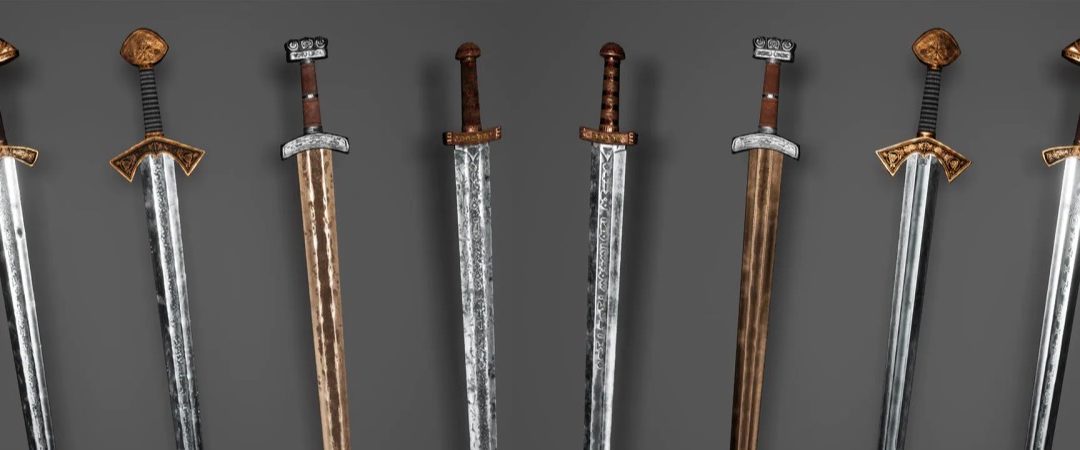What is the Norse strength rune?
Viking culture has a number of symbols that represent strength and power. One of the most prominent of these is a rune for strength. One of these runes was believed to imbue the wearer with all the strength and power of an ox, making them virtually unbeatable in combat. Other common strength symbols include the hammer of Thor, which was said to be so powerful that it could level mountains, and the sword of Freyr, which was said to be able to cut through anything. These symbols were often inscribed on weapons and armor, as well as on other objects that Viking warriors wanted to imbue with their own strength and power.
There are many other rune meanings, to see them all, check out our Complete Elder Futhark Rune Guide
The Elder Futhark
What is the Elder Futhark?
The Elder Futhark is a rune alphabet that was used by the Germanic peoples of northern Europe, Scandinavia, and the British Isles during the Early Middle Ages. The name “Elder Futhark” comes from the first six runes of the alphabet: Fehu (F), Uruz (U), Thurisaz (TH), Ansuz (A), Raidho (R), and Kaunan (K), and can therefore be literally translated as “the old ABC’s”. These rune symbols were carved into wood or stone for use as magical amulets or talismans. Each rune had its own meaning and purpose, and some were believed to have special powers. At least 6 can be considered a dedicated rune for strength, these are Uruz, Hagalaz, Nauthiz, Isa, Sowulo, and Othillo. The Elder Futhark fell out of use after the Christianization of the Germanic peoples in the 11th century AD. However, it has been revived in recent years by people who are interested in paganism and Norse mythology.
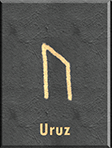
1. Uruz
What does Uruz rune symbolize?
The Uruz rune is one of the most popular runes, and it is also one of the most versatile. This rune can symbolize strength, power, virility, energy, health, and success. It is also associated with courage, determination, and perseverance. In some traditions, the Uruz rune is also associated with fertility and abundance. The name “Uruz” is a debated topic among historians, but the most common interpretation is that it comes from the word “Aurochs” the name for an ancient species of European buffalo, the ancestor of the modern cow. This rune can be used for protection, healing, and PSI work. It is also helpful for increasing strength and stamina. The Uruz rune is a powerful symbol of strength and power, and it can be a potent tool for manifesting your desires.
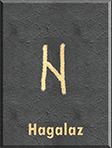
2. Hagalaz
What does Hagalaz rune symbolize?
The Hagalaz rune is one of the most powerful symbols in the Norse alphabet. It represents strength and fortitude in the face of adversity. “Hagalaz” is the ancient nordic word for “hailstones”, and the rune is said to represent the fury of the elements, and it is often used to ward off evil spirits. The symbol can also be used to invoke strength and protection during times of trouble. In many cultures, the rune is associated with the hammer of Thor, the god of thunder. This connection gives the symbol even more power, as it represents the strength of Thor himself. For all these reasons, the Hagalaz rune is a powerful symbol that can be used for protection and strength in times of need.
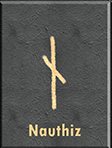
3. Nauthiz
What does Nauthiz rune symbolize?
The Nauthiz rune is a symbol of strength and perseverance. It represents the hard work and determination needed to overcome challenges. The name “Nauthiz” literally means “not this” and represents dissatisfaction and the desire for change. This rune is often used as a talisman to help protect against adversity. Nauthiz can also be helpful in situations where we need to make sacrifices. It reminds us that sometimes we need to go without in order to achieve our goals. The strength of the Nauthiz rune can help us to weather any storm.

4. Isa
What does Isa rune symbolize?
The Isa rune is one of the most versatile and well-known runes in Norse mythology. Its name means “ice”, and it is associated with strength, stillness, and determination. In some stories, the Isa rune is said to represent a frozen heart, and it is often used as a symbol of strength in the face of adversity. The Isa rune is also sometimes associated with the god Thor, who was known for his strength and power. When used in divination, the Isa rune can indicate a need for stillness and reflection, or a period of hardship that must be overcome. However you choose to interpret it, the Isa rune is a powerful symbol with a wide range of meanings.
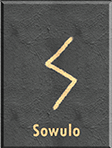
5. Sowulo
What does Sowulo rune symbolize?
The Sowulo rune is one of the most powerful symbols in the Nordic tradition. It represents strength, courage, and victory, and is often associated with the god Thor. The word sowulo comes from the Old Norse word for “sun,” and it is said to represent the power of the sun to overcome darkness. In many ways, the Sowulo rune embodies the core values of the Norse people: strength in the face of adversity, and a willingness to fight for what is right. For these reasons, the Sowulo rune is a popular symbol among modern-day Heathens and Pagans.
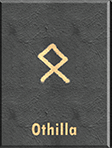
6. Othilla
What does Othilla rune symbolize?
The Othilla rune is one of the most popular runes among practitioners of Norse magic. It means “homeland”, referring to both country and origin, but also literally as a marker for the home. It symbolizes ownership, and the strength to defend yourself and your home. This strength can manifest in many forms, such as physical strength, mental fortitude, or emotional resilience. In the context of magic, Othilla can also be used to empower spells and rituals designed to achieve a specific goal. For example, if you were looking to increase your strength in the gym, you could use Othilla to give your workout routine an extra boost. Similarly, if you were trying to overcome a difficult obstacle in your life, you could use Othilla to help you find the strength you need to persevere. No matter how you choose to use it, the Othilla rune is a powerful symbol of strength that can be harnessed in many different ways.
Other Norse Strength Runes
Strength symbols abound in almost all facets of Norse mythology and culture, they can be found on coins, jewelry, signposts, architecture and more! Almost all weapons of the gods are considered symbols of strength, and many runes and staves are dedicated charms to invoke strength in the right circumstances. Here are just a few of the most common and interesting examples!
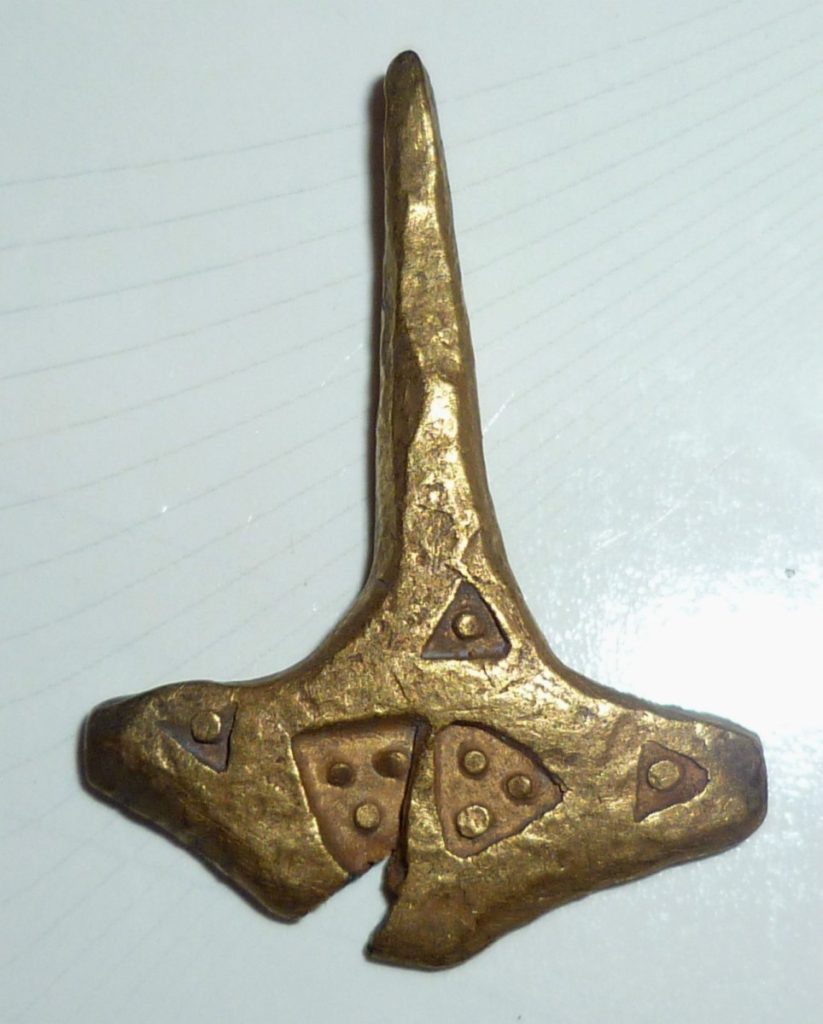
Brass Mjolnir amulet, worn around the neck
Mjolnir
Mjolnir is a symbol of strength in Norse mythology. The hammer was wielded by Thor, the god of thunder, and was said to be able to level mountains. Mjolnir was also a powerful weapon, capable of slaying giants and other creatures. In many ways, Mjolnir represents the strength of the Norse gods. They were said to be able to overcome any obstacle, no matter how daunting. This strength was also reflected in their ability to defend Asgard, the home of the gods, from their enemies. Mjolnir was a key part of this defense, and its power helped to ensure the safety of Asgard and its inhabitants. Today, Mjolnir remains a popular symbol of strength and power. It is often used as a tattoo design or displayed as a decorative item. For many people, Mjolnir represents the strength and courage to overcome any challenge.
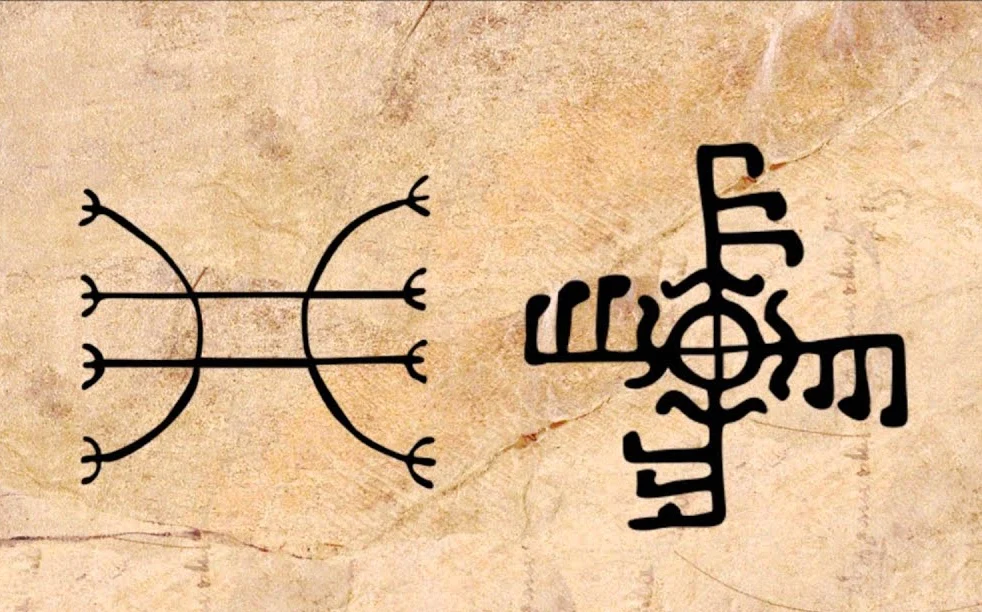
Gapaldur (left) and Ginfaxi (right)
Gapaldur and Ginfaxi
A pair of very specific magical rune staves, Gapaldur and Ginfaxi are twin charms for success in ancient Icelandic wrestling (Glima). The symbols are meant to be inscribed on a piece of leather or parchment, and then placed in the shoes of a wrestler, Gapaldur under the heel of the right foot (for the endurance to stand firm) and Ginfaxi under the toes of the left foot (for the strength to push against the opponent). In modern times, they can be used for this same purpose, as well as in tattoos and other decorations. It is not a general strength charm, it is specific to physical competition.
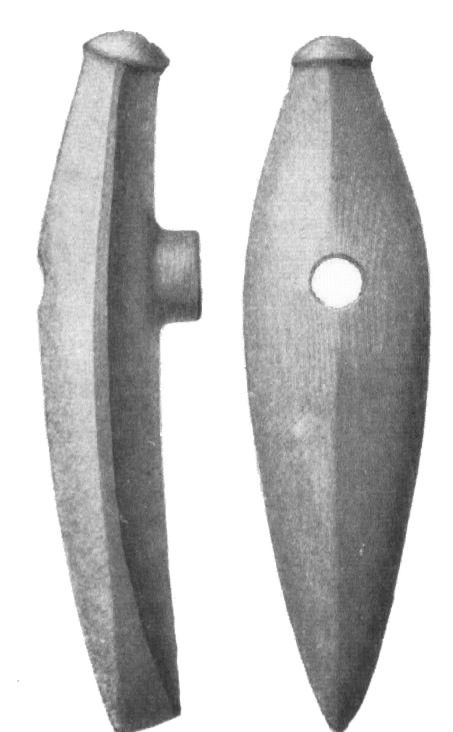
The boat-shaped stone axes that inspired the Ukonkirves
Ukonkirves
Ukko is an ancient Finnish deity, worshipped before the viking age, and therefore before the inclusion of the Aesir gods such as Odin or Thor. He can be considered a prototype of Thor, as he was also a god of storms with extreme strength who fought monsters with his double headed weapon. Instead of the hammer Mjolnir, his weapon was a double bladed axe known as the Ukonkirves (Ukko’s blade), it was a specific wedge or boat shape, inspired by ancient stone axes used for hewing wood, and its design continued as an item of jewelry, similar to the later Thor’s Hammer talismans worn by nordic people during the era of Christianization.
Other Runes of Power
Though war and strength symbols are endemic to Viking society, there are hundreds of other symbols, representing all kinds of other charms, curses, fears and desires faced by everyday people over a thousand years ago in Scandinavia:

A Viking winged spearhead, of a design similar to Gungnir, Odin’s winged spear
Gungnir
In Norse mythology, Gungnir is the spear of Odin, the chief of the gods. It is said to be made from the wood of Yggdrasil, the world tree, and to have been forged by dwarves. The spear is described as being winged and as having a barbed point. It is also said to be unbreakable and always hits its target. In some versions of the myth, Gungnir is given to Odin by Loki, the trickster god; in others, it is made by the dwarves as a gift for Odin. In either case, the spear is a symbol of Odin’s power and authority.
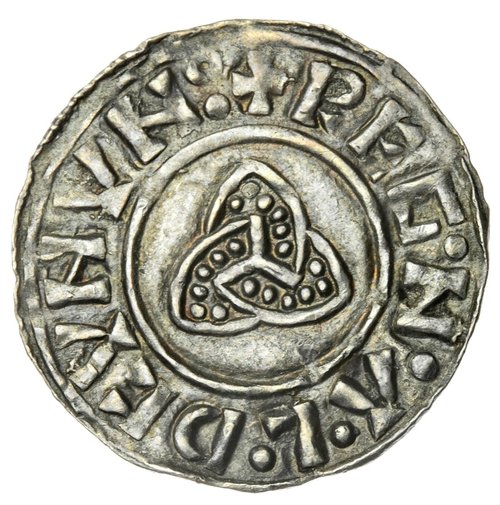
Triquetra found on one side of a Celtic coin found in what is now modern Kent
Triquetra
The triquetra is an ancient symbol with many different meanings. Originally, it was used by the Celts as a symbol of their sun god, or as a depiction of the three phases of the moon. In Nordic mythology, the triquetra is often seen as a symbol of the gods Odin, Thor, and Freyja, or as a representation of the three elements of earth, air, and water. Today, the triquetra is still used as a religious symbol by many Pagans and Wiccans. It is also seen as a sign of protection, or as a representation of the Holy Trinity. Whether you see it as a sacred symbol or a beautiful work of art, the triquetra is sure to add intrigue and meaning to any setting.
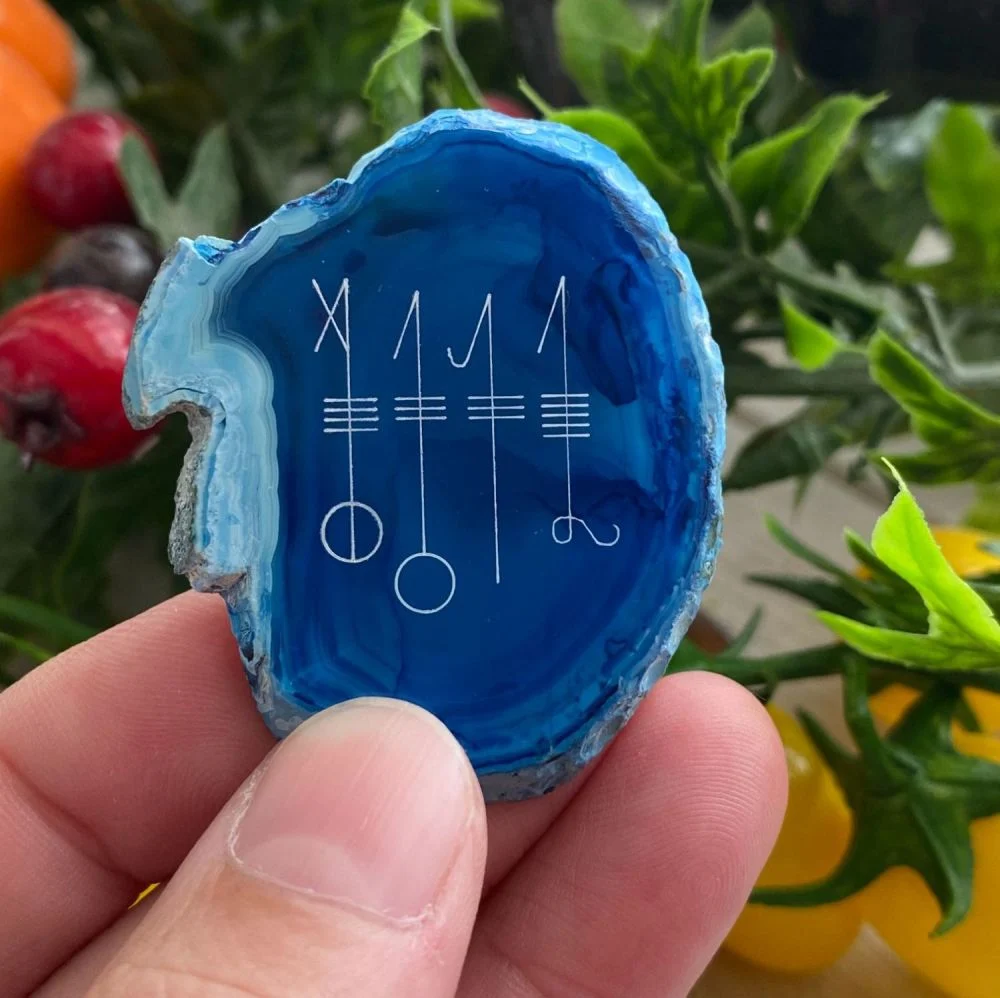
Svefnthorn engraved on a modern “sleeping stone” a charm placed on the forehead to induce deep sleep
Svefnthorn
Commonly depicted as four runes, svefnthorn (sleep thorn) is a magical plant that grows in Iceland, known for it’s sleep inducing properties. Mythical Svefnthorn is a plant found in the region of Jotunheim. It has a very strong and sweet smell, which is used to lure animals. Once the animal has inhaled the scent, it falls into a deep sleep. Brunnhild, a Valkyrie, gave this plant to Sigurd as a means to help him defeat the dragon Fafnir. When Sigurd placed the herb under the dragon’s nose, it immediately fell asleep and he was able to slay it. Svefnthorn can be deadly if ingested, but it is otherwise harmless. animals that have been affected by it typically wake up unharmed and with no memory of what happened while they were asleep.

